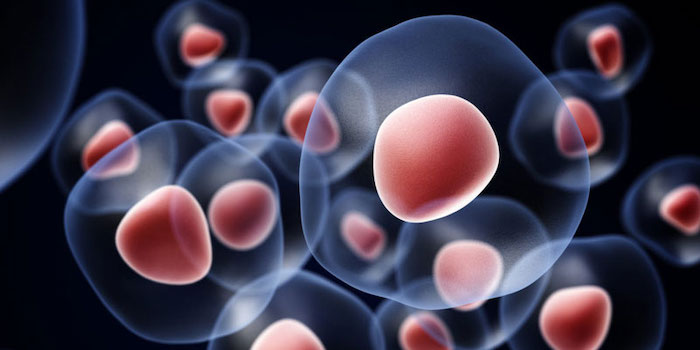
Chronic low back pain affects 68% of adults older than the age 60 worldwide. Stem cell therapy has shown beneficial results as an alternative to conventional regimens in the management of degenerative disc disease (DDD). The objective of stem cell therapy is to restore the disc’s cellularity and minimization of the inflammatory response.
The causes of disc degeneration are multifactorial; they involve aging, smoking, genetics, nutritional factors, mechanical injury, and comorbidities. Normally, the amount of water and proteoglycan content of the disc increases from the outer annulus fibrosus (AF) to the inner nucleus pulposus. Opposingly, the amount of collagen decreases in the disc from out to in. In DDD histology, there is a progressive loss of the transition zone between AF and nucleus pulposus over years. This is due to a change from collagen type II to collagen type I, which is synthesized by the nucleus pulposus. This eventually leads to dehydration and loss of proteoglycans. Disc narrowing, which can be observed radiographically, can be caused by many mechanisms such as matrix metalloprotease-mediated disc degeneration, diminished disc nutrition, etc.
The features of DDD are osteophytes, joint space narrowing, and endplate sclerosis, eventually leading to nerve root compression resulting in symptoms of pain and numbness. Angiogenesis advances from the periphery, eventually extending centrally into the nucleus pulposus, causing discogenic pain. Both non-surgical and surgical interventions have failed to manage this condition effectively. A controlled study which was done on 1,450 patients targeting a return to work (RTW) as an outcome measure revealed that 67% of the control group had RTW within two years but only 26% of patients could RTW after two years following intervention by fusion surgery.
Stem cell therapy restores the cellularity of the IVD and reduces inflammatory mediators. Patient selection plays a pivotal role in the success of stem cell therapy. This intervention can improve the overall outcome in patients who fail to respond to conservative treatment or are in the early stages of DDD. Patients with a disability, as proven by functional scores such as a Pfirrmann grading of Grade III or IV on MRI, and moderate chronic back pain are considered as ideal candidates for the therapy in many studies.
Stem cell therapy is currently using stem cells from other sources, autogenic or allogenic in origin or primary cells harvested from the IVD. Nucleus pulposus progenitor cells (NPPC), AF specific progenitor cells, autologous IVD cells, iPSCs, autologous chondrocytes, MSCs (derived from adipose tissue, bone marrow or umbilical cord Wharton's jelly), and embryonic stem cells are some of the different cell lines that have been used as stem cells for discogenic back pain. The different cell lines differ in their characteristics depending on the origin tissue.
Harsh environments such as nutrient scarcity, acidic conditions, and low cellularity make utilization of undifferentiated stem cells a major challenge. The microenvironment of the cultivation culture determines the effectiveness and production of stem cell phenotypes. Stem cell priming with growth factors or different environmental factors such as glucose, oxygen, etc., has been rigorously researched by in vitro and in vivo studies. Synergistic effect in making a favorable environment has been seen in vitro studies that have combined IVD and MSCs. Inflammatory cytokines and matrix degenerating enzyme-related genes were suppressed in an in vitro study that combined human MSCs with rat IVD-NP cells. Similar effects were seen in some in vivo studies, with animal models using MSCs. 81% to 91% improvement in MRI signal intensities were noted in post-nucleotomy rabbit models due to suppression of type 1 collagen formation with the use of MSCs injection compared to sham-treated discs which showed 67% to 60%. Reduced disc tissue degeneration, microenvironment catabolism, recovered disc height, and decreased pain has been evident in the growing number of studies. Culturing of human MSCs in vitro has proven that many of these effects are reproducible. Improvement in pain and function has been noted in limited clinical studies that have been done. Both animal and human studies have successfully shown evidence supporting disc regeneration and at least partial recovery in addition to safety and feasibility. To collect more data on human benefits, further clinical studies are required.
Gene therapy has been advanced in order to overcome the shortcomings of conventional methods. Over direct delivery of proteins, gene therapy has advantages such as enhanced efficacy and sustained anti-inflammatory factors and growth factors synthesis endogenously. Image-assisted percutaneous injection through the AF has been used conventionally, although it has raised some safety concerns. Alternative routes of administration are through the pedicles (transpedicular approach) and the use of delivery vehicles. Delivery vehicles, hydrogels have been utilized to overcome retention issues and provide additional support for cell survival and phenotype retention. Scaffolding materials, such as hyaluronan, fibrin, and atelocollagen have been developed to improve the efficiency of stem cell delivery into degenerated IVDs.
Precision Pain Care and Rehabilitation has two convenient locations in Richmond Hill – Queens and New Hyde Park – Long Island. Call the Richmond Hill office at (718) 215-1888, or (516) 419-4480 for the Long Island office, to arrange an appointment with our Interventional Pain Management Specialist, Dr. Jeffrey Chacko.













